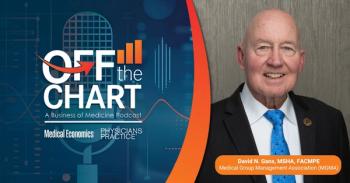
Basic Financial Reports for Your Medical Practice
Knowing where you should focus your attention is important. Here are six reports that will tell you what you need to know to run your practice well.
There are literally hundreds of financial metrics that a practice could report on - it really depends on the size of the practice, the types of insurances accepted, and even the specialty. But if you are looking to run a panel of basic reports, our experts say these are a good place to start:
1. Days in Accounts Receivables (A/R)
Days in A/R is the average number of days it takes to collect on a patient account. Ken Hertz, principal with the Medical Group Management Association, says practices should track their A/R on a monthly basis, focusing their greatest attention on accounts older than 90 days.
Days in A/R = total A/R ÷ (annual gross charges ÷ 365)
2. Percentage of total A/R in each aging category: 30 days, 60 days, 90 days, 120+ days
Experts say it is much harder to collect on outstanding accounts greater than 60 days. Hertz recommends trending those categories over a period of three to six months and benchmarking them against national averages.
3. Days in sales outstanding (DSO)
DSO is a measure of the average number of days that a practice takes to collect revenue after a patient visit. P.J. Cloud-Moulds, a practice consultant, says she like to track DSO so she knows how quickly her practice is getting paid. "Most of the time, when you see a patient at the beginning of the month, you'll be paid at the end of the month," she says, "That's critical for cash flow."
DSO = (accounts receivable ÷ total credit sales) x number of days
4. Charges and collections by payer
At its most basic, your practice should be tracking monthly charges and collections by payer, says practice consultant Reed Tinsley, so that you know "where most of your business is coming from," he says. By following metrics like collection percentages, the practice can assess how valuable a certain payer is to its revenue cycle, and how easy or difficult it is to work with.
Hertz recommends tracking front-desk collections and outstanding patient balances as well, as newer high-deductible insurance plans shift a greater percentage of cost to patients.
5. Key practice metrics
Our experts also recommend tracking the number of patient visits per month, broken out by new and established patients; calculating the new-to-established patient ratio; referrals by provider; and patient visits per provider, to gauge continued practice growth.
6. E&M coding patterns
Reviewing E&M coding by provider can be useful for detecting a tendency to under-code says Tinsley. That's leaving money on the table. Medicare publishes national averages for free so that practices can benchmark their providers.
Newsletter
Optimize your practice with the Physicians Practice newsletter, offering management pearls, leadership tips, and business strategies tailored for practice administrators and physicians of any specialty.










